
For the week ending Sept. 27, grain export sales exceeded trade expectations, although some totals slipped from the prior week.
“Corn and soybean sales were excellent as expected last week, though wheat business remains rather slow, especially for shipments,” says Farm Futures senior grain market analyst Bryce Knorr. “While total soybean sales and shipments through the first four weeks of the marketing year are at the lowest level in six years, early corn business is the best in a decade, thanks to low prices and tightening world supplies.
The big loser remains sorghum. China again bought nothing last week, though Mexico added a few sales.
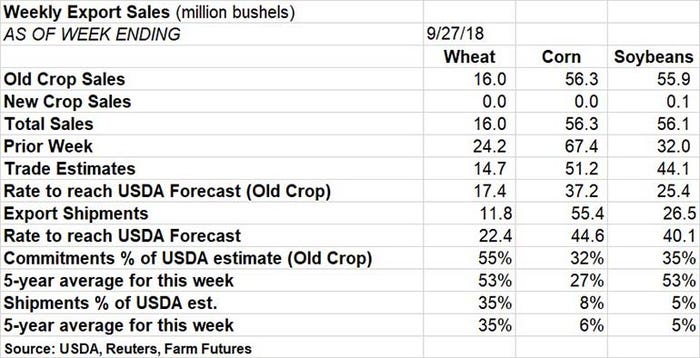
Corn found 56.3 million bushels in total export sales, which eased from the prior week’s big tally of 67.4 million bushels while still coming in ahead of trade estimates of 51.2 million bushels. The weekly rate needed to match USDA forecasts shifted lower, to 37.2 million bushels.
Corn export shipments of 55.4 million bushels also exceeded the rate needed to reach USDA forecasts, now at 44.6 million bushels. So far for the 2018/19 marketing year, which began Sept. 1, Mexico is the leading destination for U.S. corn export commitments after accounting for 31% of the total. Other top destinations include unknown destinations (15%), Japan (15%), South Korea (9%) and Taiwan (4%).
Soybean exports saw 55.9 million bushels of old crop sales plus a sliver of new crop sales that brought the total to 56.1 million bushels. That far exceeded the prior week’s total of 56.1 million bushels and bounced well above trade estimates of 44.1 million bushels. The weekly rate needed to match USDA forecasts dropped to 25.4 million bushels.
“China cancelled a net 4.6 million bushels of soybean purchases previously on the books,” Knorr says. “Chinese buyers have purchased, but not yet shipped out another 44 million bushels. South Korea so far is a minimal buyer, but with 300 million bushels sold to “unknown destinations,” those beans could be diverted if China remains blocked due to tariffs”
Chinese buyers were on Golden Week holiday this week, Knorr adds, but they are unlikely to return soon. China and the U.S. are rattling sabers for tariffs, on the oceans and in cyberspace. Added up, tensions could get worse before they get better, Knorr says.
Soybean export shipments reached 26.5 million bushels last week, moving the weekly rate needed to meet USDA forecasts higher, to 40.1 million bushels. Unknown destinations by far represents the top destination for U.S. soybean export commitments in the 2018/19 marketing year, accounting for 40% of the total. Other top destinations include Mexico (15%), China (6%), Argentina (5%) and the European Union (5%).
Wheat export sales reached 16.0 million bushels last week, slumping from the prior week’s total of 24.2 million bushels but besting trade estimates of 14.7 million bushels. The weekly rate needed to match USDA forecasts moved slightly higher, to 17.4 million bushels.
Wheat export shipments of 11.8 million bushels was nearly half of the weekly rate needed to reach USDA forecasts, meantime, which moved up to 22.4 million bushels. The Philippines holds on as the top destination for 2018/19 U.S. wheat export commitments, accounting for 15% of the total. Other top destinations include Japan (12%), Mexico (12%), South Korea (8%) and unknown destinations (6%).
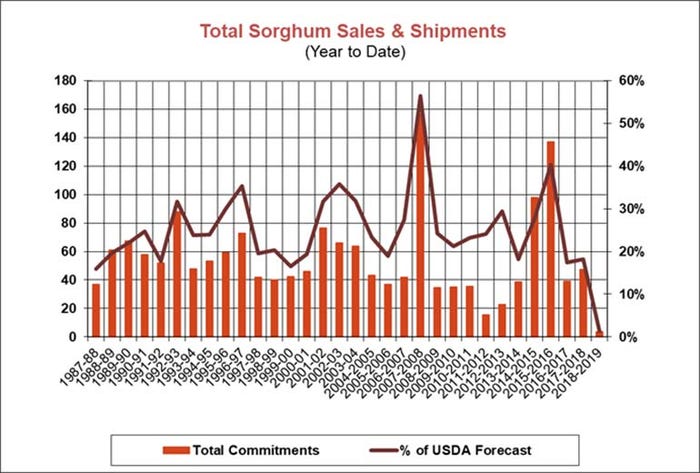
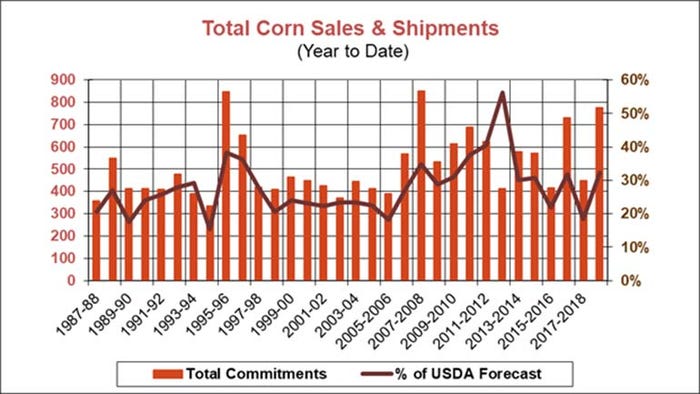
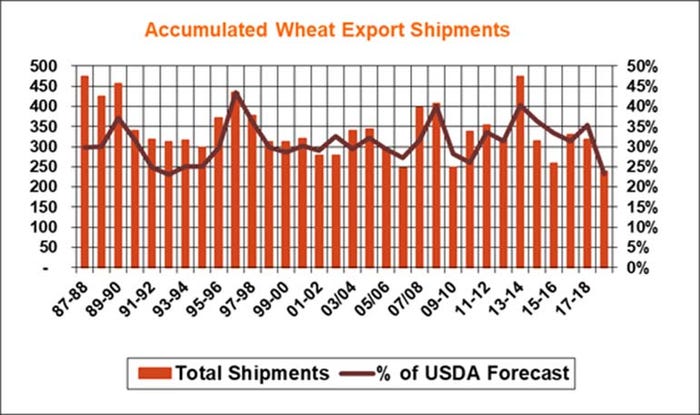
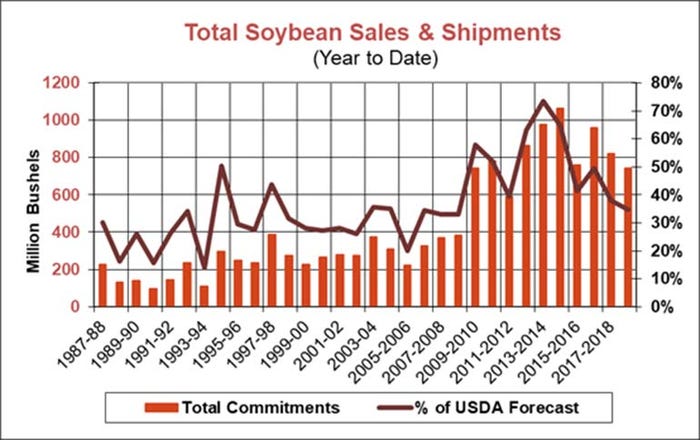
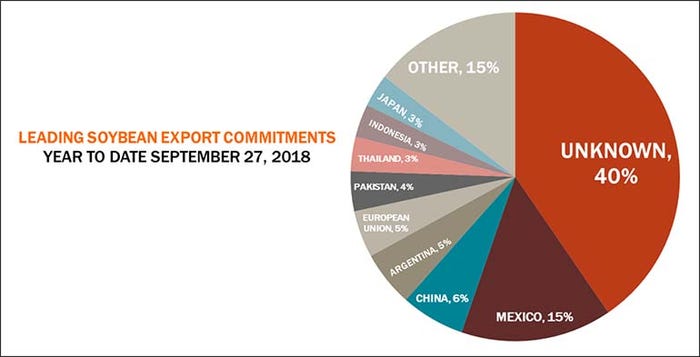

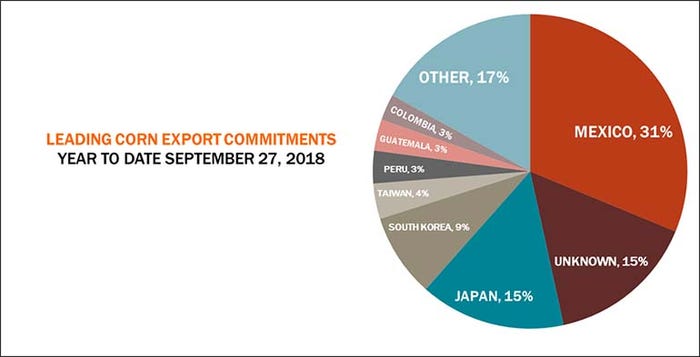
About the Author(s)
You May Also Like






